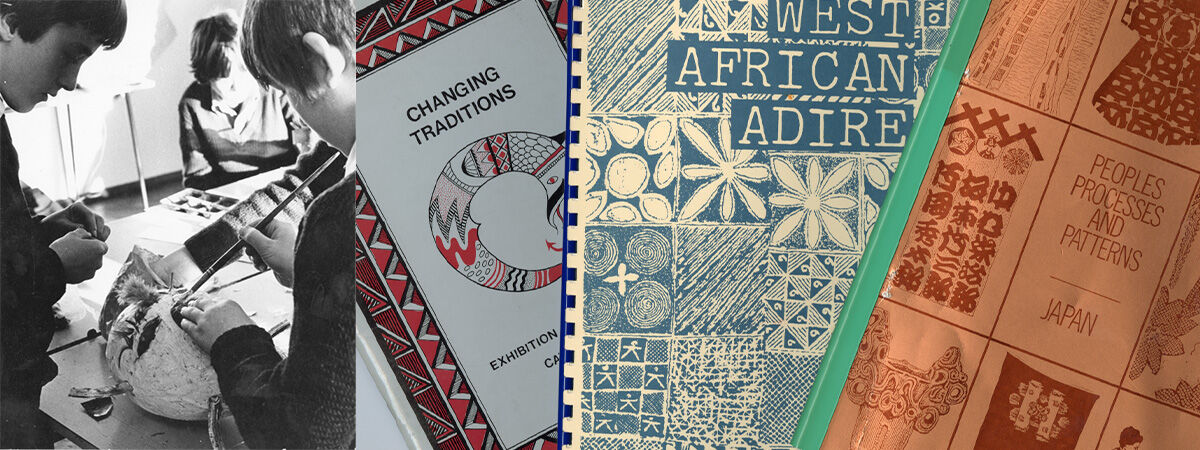Art Education Collection
 Left a photograph of an art class,1970s/80s, photographer unknown. Right, a selection of Ethnographic resource publications by members of staff, 1980s.
Left a photograph of an art class,1970s/80s, photographer unknown. Right, a selection of Ethnographic resource publications by members of staff, 1980s.
In the years immediately after World War II, the art teacher’s diploma focused on the development of practical skills in the arts and crafts, with students taking the same exams as those on the National Diploma in Art and Design but studying for an extra year.
However, there was dissatisfaction with this approach. In 1953, following the publication of the National Advisory Committee’s report on art examinations the previous year, a decision was taken to move the course to a specialist centre at 26 Priory Road, Edgbaston (although the practical elements were initially still based at the School of Art in Margaret Street).
Staff there developed an innovative and distinct approach to the teaching of art and design that stressed the importance of taking the children’s social and cultural backgrounds into account. For example, they set up the Ethnographic Resources Project in the 1980s in order to develop teaching materials that were relevant to Birmingham pupils’ multi-cultural backgrounds. When Priory Road closed in 1978, staff resisted the attempt to incorporate them into the Faculty of Education alongside other teaching training courses. Instead, they re-joined the School of Art which, unusually for the UK, continues to offer an MA course in Arts and Educational Practices.
The collection consists of administrative records, including those on curriculum development, finance, Government publications and responses to them, staff appointments and student admissions; resources produced by staff as part of the Ethnographic Resources Project in the 1980s; exhibition panels for student shows; photographs and videos of Priory Road and the activities undertaken there; cassette tapes of interviews with former staff; books, articles and other publications; press cuttings; student projects; a small number of paintings, posters and drawings, and some notes and correspondence on the School’s history that dates from the 1990s. Most of the material dates from the 1950s to the 1980s.
Arts, Design and Media Archive
Open Tuesday - Thursday, 10am - 5pm